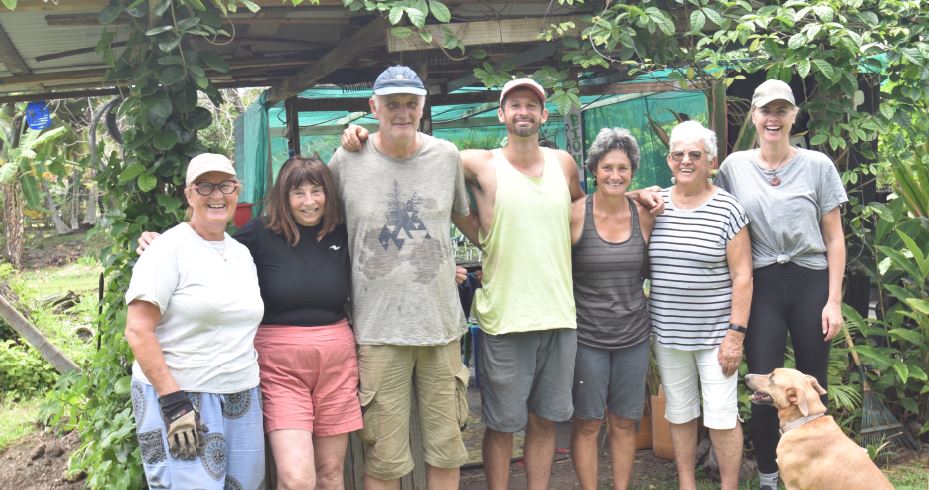Initiative to preserve Muri Lagoon
Monday 20 November 2023 | Written by Melina Etches | Published in Environment, Local, National

The Muri Environment Care (MEC) community group is growing a variety of native plants, vines and trees to replant, to help hold back the stream banks, and sand in coastal areas. MELINA ETCHES/23111511
An enthusiastic effort is being undertaken by a whole-hearted community group whose passion is to preserve and protect the popular and beautiful Muri Lagoon in Ngatangiia.
The Muri Environment Care (MEC) community group have planted vetiver grass alongside the banks of Parengaru Stream to stabilise the soil for native plants to be planted.
Ann Tierney, a pioneer of MEC, explained about the importance of vegetation surrounding streams to help to remove pollutants from the water before it makes its way into Muri Lagoon.
Tierney noted that during past flash floods, top soil was brought down which flowed into the stream then gushed out into the lagoon.
“The main thing for us is to try and look after the wellbeing of Muri Lagoon,” she said.
“We are doing something practical about it to try to prevent the soil from washing away in the streams.”
Currently, the group is focused on the Parengaru Stream to learn more and determine if their stream rehabilitation planting programme will be effective.
Brennan Panzarella, head ecologist at MEC, explained about the significance of native plants and the specific roles they play in stream rehabilitation.
“We are using this opportunity to grow native plants to try and restore the stream side bank vegetation that will hold the stream banks, to prevent them from eroding the soil that ends up in the lagoon.”
He said these particular plants are also filter pollutants that are filtering water from the land before it gets into the stream.
“It’s also an opportunity to create wildlife corridors like providing native trees for birds to nest and shelter, and for sea life like eels and kaura (freshwater crayfish).”
Panzarella noted that they are specially interested in working with people who live near streams to find solutions that work for them, and work for the stream.
The MEC nursery is nurturing a variety of native plants, vines and trees to replant to help hold back the stream banks, and sand in coastal areas – an example is the 'Ano (Guettarda speciosa), a coastal hardy native tree.
Additionally, they are growing “vaka” plants – plants that arrived with the first voyaging Polynesians.
Much of their seedlings and plants have come from up in the hills while they are looking for endangered species to grow, working with Gerald McCormack, director of the Cook Islands Natural Heritage Trust.
Panzarella also mentioned the late Joseph “Joe” Brider who had a great passion for flora, “he is the basis for all of my knowledge in native plants and he gave me a massive step”.
The MEC Riparian (stream planting) and Coastal Restoration project is comprised of three main activities which are funded by the United Nations Development Programme through the Global Environment Facility that covers a lot of the riparian restoration.
This involves seed eco-sourcing and growing mostly native plant species at their nursery for revegetation and ecosystem rehabilitation efforts along streams and coastlines. Designing, establishing, and monitoring riparian and coastal plantings is also part of their work in addition to creating educational experiences at their nursery and planting sites for people of all ages.
Currently the MEC volunteers are constructing a “cherry tomato tower” recycling an old trampoline placed upside down and using old electrical wire to build an arc for tomatoes to crawl along and grow.
If anyone has a ladder or a drill (in working order) that they no longer need and would like to donate to the team, please contact MEC via Facebook.
Volunteers are also welcome to join the happy hard-working team at the nursery.














































